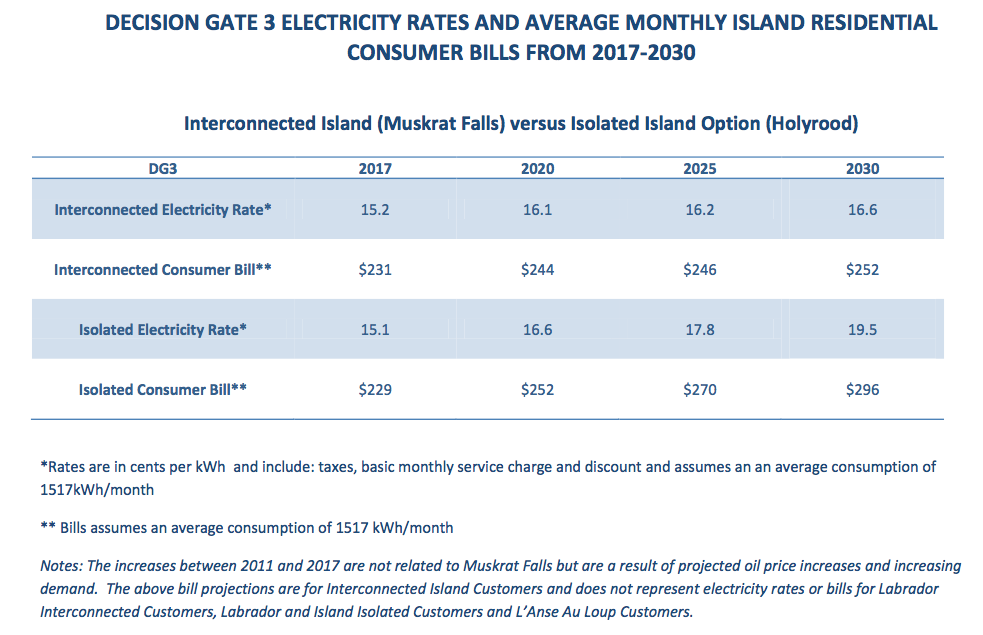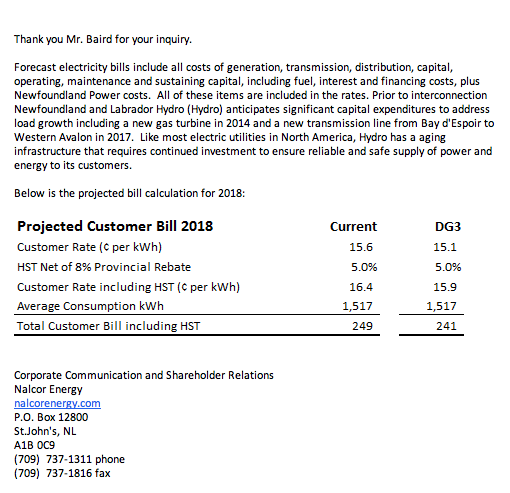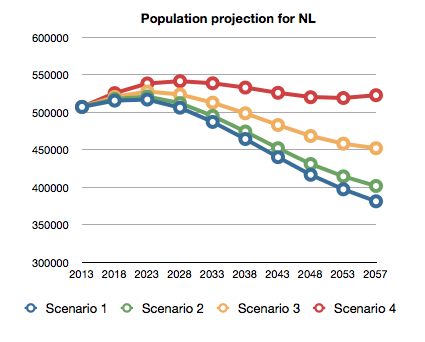I have just received a response to my access to information request concerning the North Spur stabilisation plan. The response to my request can be found here and here.
The North Spur is a ridge that acts as a natural dam on the Churchill river and is an integral part of the Muskrat Falls project. The North Spur contains sensitive clay that can liquify under stress and cause landslides. Some have alleged that Nalcor has not done enough to ensure the stability of the North Spur, with potentially catastrophic consequences.
An expert on quick clay landslides, Dr. Stig Bernander, recently gave two lectures in St. John's outlining what he considers to be deficiencies in Nalcor's analysis of the North Spur stabilisation plan. In particular, he argued that a method of analysis that he developed for assessing the risk of "downhill progressive failure" ought to be performed.
I attended both of Bernander's lectures and found them quite interesting, but also frustrating. Frustrating because Bernander based his criticisms solely on publicly available documents and appears not to have sought additional clarification from Nalcor. Frustrating also because Nalcor has chosen not to respond to Bernander's allegations by releasing the relevant documents.
After Bernander's lectures, I submitted an access to information request to Nalcor for documents I hoped would clear up the matter. Specifically I asked for:
The review of "geotechnical assessments and dynamic studies" of the North Spur stabilization project by Dr. Serge Leroueil. This review is referred to by the Independent Engineer in the "Lower Churchill Project Site Visit Report" dated October 20, 2014.Dr. Leroueil is an internationally renowned expert on sensitive soils and was specifically recognised as such by Dr. Bernander during his lecture. The response to my request can be found here and here.
To summarise: I received two (minimally redacted) letters signed by Leroueil and addressed to the lead geotechnical engineer for the project, M. Regis Bouchard. The first letter, dated August 24th 2014, is a review of an engineering report on the North Spur Stabilization Works. Leroueil considered that report to be satisfactory. The key excerpt is the following:
... I would add that the stabilization works increase the factor of safety from about 1.0 to about 1.6, which is very significant. Also, by doing that the maximum shear stresses in the soil mass have been significantly reduced, eliminating the possibility of progressive failure in the sensitive clays.
The second letter, dated October 26th 2014, is written in French in a more informal tone, and deals specifically with kind of analysis Bernander insists should be performed. I am a bit less confident in my interpretation of this letter (partly because it is in French, partly because it deals with technical engineering issues), but Leroueil seems to argue that Bernander's method of analysis would be difficult to interpret and is unnecessary.
On the other hand, the letter does confirm some points raised by Bernander in his lecture: that there is no established method for assessing stability against "downhill progressive failure" and that Bernander's preferred method of analysis has not been performed.
On the other hand, the letter does confirm some points raised by Bernander in his lecture: that there is no established method for assessing stability against "downhill progressive failure" and that Bernander's preferred method of analysis has not been performed.
Here is my effort at translating the relevant parts of the second letter. The last sentence of point 2. seems out of place - I wonder if he meant to write 'top of the slope' rather than 'foot of the slope'.
Concerning the North Spur, my opinion is the following.
There is no established methodology for assessing stability against "downhill progressive failure". Bernander offers a very artisanal methodology that, to my knowledge, has only been used for the analysis of existing fractures, for which the results were known in advance. Ariane Locat has adapted this method for "uphill progressive failures" which has been used to understand two spreads in sensitive clays. In my view, starting to do these calculations will lead to lots of pitfalls and questions.
On the other hand, the method of analysis consists of defining the initial shear stress along a potential failure surface, probably approximately horizontal and passing through the foot of the slope in our case. This shear stress is maximum at virtually the crest of the slope. If a disturbance increases the shear stress in some location up to the shear strength of the soil, then a progressive failure can begin and eventually lead to a global rupture. There are two important things in what I just said :
1. The initial shear stress. If you show that you have improved the stability of the slope (higher F), it means that you have reduced your initial shear stress and you move away from the shear strength of the soil.
2. Disturbance that can locally increase the shear stress. This disturbance may come from the bottom or top. In Quebec, the disturbance is usually an erosion or a small break at the foot of the slope. But as you have protected your foot slope, you have removed the possibility of disturbance at the foot of the slope. The disturbance may also come from the top, like the pile shaft sinking in the case of Surte studied by Bernander. And there, it must be shown that you have taken all precautions to prevent all disruption at the foot of the slope.
If you improve your stability, thus reducing the possibility of progressive failure compared to what it was, and if you prevent any disturbance, you can not have progressive failure. I think this is how one must address the problem.










